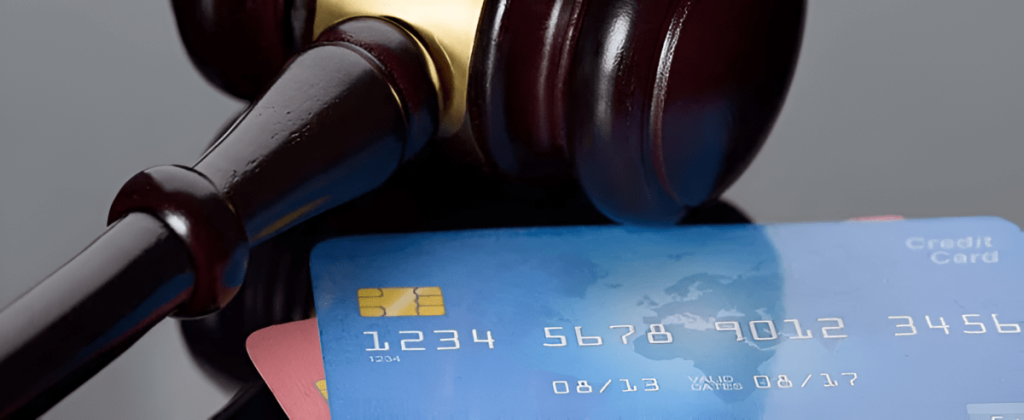Introduction
Chargebacks pose significant challenges for merchants. Originally designed to protect consumers from fraud, chargebacks can lead to lost revenue and increased costs for businesses. Understanding the legal framework and merchants’ rights can help mitigate these risks.
Understanding Chargebacks
A chargeback is a reversal of a credit card transaction, initiated by the issuing bank at the cardholder’s request. While necessary for consumer protection, chargebacks can harm businesses. According to Checkout.com, global chargeback losses are projected to exceed $50 billion annually by 2025.
- Reasons for Chargebacks:
- Fraudulent transactions
- Customer dissatisfaction
- Transaction processing errors
- Non-delivery of goods or services
The Fair Credit Billing Act (FCBA) of 1974 established the chargeback process in the U.S., allowing consumers to dispute incorrect or unauthorized charges. However, this also led to “friendly fraud,” where consumers dispute legitimate transactions.
Merchants’ Rights in the Chargeback Process
Despite the challenges, merchants have specific rights that can protect their interests.
- Right to Dispute Chargebacks (Representment)
- Merchants can contest invalid chargebacks through representment by submitting evidence to the acquiring bank.
- According to Mastercard’s 2023 Chargeback Report, merchants who use representment effectively win about 40-45% of disputes.
- Importance of Reason Codes
- Reason codes explain the cause of a chargeback and guide merchants on addressing disputes.
- Top Reason Codes:
- Visa Code 13.1: Merchandise/Services Not Received
- Mastercard Code 4837: Fraud-Card Absent Environment
- Time Limits
- Visa: Merchants have 20 days to respond.
- Mastercard: Merchants have 45 days.
- Missing these deadlines often results in automatic loss of the dispute.

Table 1: Chargeback Time Limits by Card Network
| Card Network | Consumer Filing Window | Merchant Response Time | Common Reason Codes |
|---|---|---|---|
| Visa | Up to 120 days | 20 days | 13.1, 10.4, 30.1 |
| Mastercard | Up to 120 days | 45 days | 4837, 4863, 4841 |
| American Express | Up to 120 days | 20 days | 4540, 4530 |
| Discover | Up to 120 days | 20 days | UA01, UA30 |
Common Challenges and How to Overcome Them
“Friendly fraud,” where legitimate transactions are disputed, is a significant issue. Braintree’s 2023 report indicates that friendly fraud accounts for nearly 60% of all chargebacks. Merchants can reduce these by adopting clear return policies, improving customer service, and using fraud prevention tools.
- Clear Return Policies: Transparent return policies deter customers from filing chargebacks.
- Enhanced Customer Service: Quick resolution of issues can prevent disputes from escalating.
- Anti-Fraud Tools: Tools like 3D Secure and Address Verification Service (AVS) help authenticate transactions and reduce fraud.
Merchanto.org, a partner of Visa and Mastercard, provides chargeback prevention services that help merchants reduce chargebacks effectively. For more information, visit Merchanto.org.

Legal and Network-Specific Protections
Each card network offers specific protections for merchants, emphasizing the importance of adhering to their rules.
- Visa
- Protection: Visa’s Merchant Dispute Resolution Rules.
- Notable Rule: The Visa Dispute Monitoring Program (VDMP) imposes penalties on merchants with high chargeback ratios.
- Mastercard
- Protection: Mastercard’s Chargeback Guide.
- Notable Rule: The Excessive Chargeback Program (ECP) penalizes merchants with high chargeback rates.
- American Express
- Protection: Amex offers a 120-day window for disputes but requires a 20-day response from merchants.
- Notable Rule: Merchants are encouraged to maintain detailed records to support their case.
- Discover
- Protection: Discover’s Dispute Resolution Process.
- Notable Rule: Discover’s Merchant Protection Program guards against unwarranted chargebacks.
Table 2: Key Protections by Card Network
| Card Network | Key Protection | Notable Rule/Program |
|---|---|---|
| Visa | Merchant Dispute Resolution Rules | Visa Dispute Monitoring Program (VDMP) |
| Mastercard | Chargeback Guide | Excessive Chargeback Program (ECP) |
| Amex | 120-Day Dispute Window | Detailed Record-Keeping Encouraged |
| Discover | Dispute Resolution Process | Merchant Protection Program |
Best Practices for Managing Chargebacks
To effectively manage and reduce chargebacks, merchants should follow these practices:
- Maintain Detailed Transaction Records
- Keep records of transactions, communications, and delivery confirmations to support your case during disputes.
- Adopt Multi-Layered Security
- Use CVV verification, AVS, and 3D Secure to reduce fraudulent transactions.
- Regularly Review Policies
- Ensure that return, refund, and dispute policies are clear, fair, and visible on your website to reduce chargebacks.
Table 3: Best Practices for Chargeback Management
| Best Practice | Description | Expected Outcome |
|---|---|---|
| Detailed Record Keeping | Document all transaction details | Stronger evidence during disputes |
| Multi-Layered Security | Combine CVV, AVS, and 3D Secure | Reduced fraudulent chargebacks |
| Clear Policies | Transparent return and refund policies | Fewer customer disputes |
| Customer Communication | Engage with customers proactively | Enhanced customer satisfaction |
Conclusion
Chargebacks are a persistent challenge, but understanding and exercising merchants’ rights can help. By adhering to network-specific rules, using the representment process, and implementing security measures, merchants can mitigate chargeback-related losses. Partnering with trusted providers can further strengthen your defenses against chargebacks.
This streamlined article focuses on practical advice and data-driven insights, offering merchants tools to protect their businesses from chargebacks effectively.



